cusp.talk : Bryson Rand

Two Balls/Disco (PAT, Brooklyn), 2016
cusp. :
Please introduce yourself first ~ (For example, where do you live, your educational background, when did you become interested in art, or any content)
可以先简单介绍一下自己吗:)你现在居住在哪里,你的教育背景,从什么时间点开始对图像产生了兴趣,同时也可以是任何想说的。
Bryson Rand:
My name is Bryson Rand and I live in Brooklyn, New York with my husband and two dogs. My father was an Air Force pilot and I grew up living all over the world, primarily on military bases. I first started making photographs in an after school photo program in Newport, Rhode Island when I was 15 years old. I received an MFA in photography from the Yale School of Art in 2015 and attended the Skowhegan School of Painting and Sculpture in the summer of 2019, and I teach photography at Bard College. I have lived in New York City since 2005.
我的名字是Bryson Rand,与我的丈夫和两只狗住在纽约的布鲁克林。我的父亲是一名空军飞行员,我从小就生活在世界各地,主要是在军事基地。我15岁时在罗德岛纽波特的一个课后摄影项目中第一次开始拍摄照片。我在2015年获得了耶鲁大学艺术学院的摄影硕士学位,并在2019年夏天参加了斯科赫根绘画和雕塑学校,现在在巴德学院教摄影。自2005年以来我一直住在纽约市。
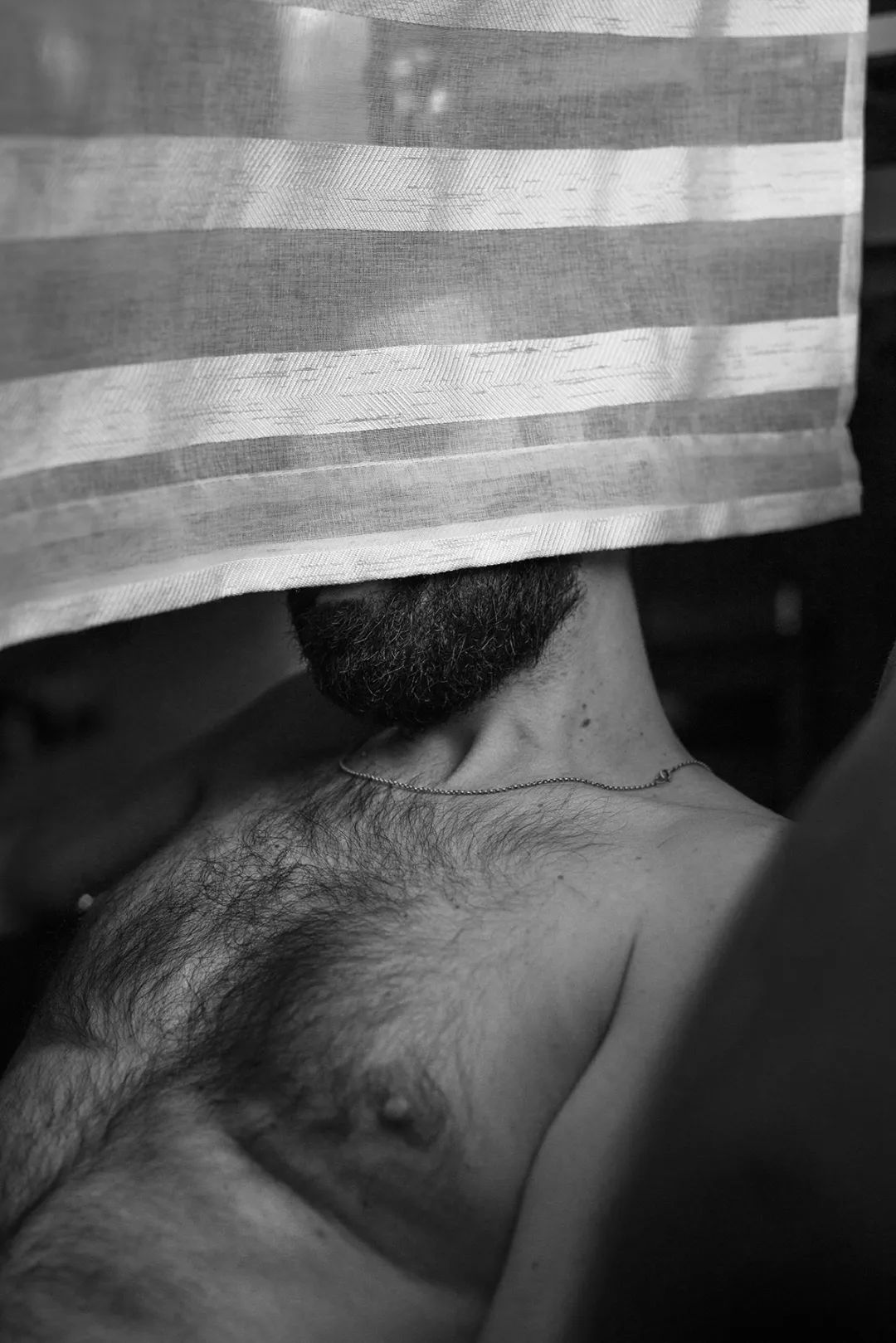
Patrick in My Living Room, 2021
cusp. :
How would you describe your creation? (For example, commonly used media and techniques, focus on themes, visual style, etc.)
你会怎样讲述自己的创作:)
Bryson Rand:
I use photography as a way to better understand my place in the world and create an undeniable record of the existence of the people and places I value. Having been born at the onset of the AIDS crisis, much of my life was spent without the guidance and support of queer elders. It is in large part through the photographic records of my forebears that I have been able to access and comprehend the stories and cultural impact of those who were lost to death and the closet. Through my work I apply the lessons of cultural survival and the ability to find joy that my ancestors employed in the face of loss, grief, and caretaking. Much like those who came before me, I feel dissatisfied with the world and use artmaking to present an alternative realm that is centered on generosity and care. By bringing together photographs of people, communities, spaces, and histories in sequences and artist books, I hope to pay tribute to the influences that have shaped my experience as a gay man and make work that is an intergenerational link between past, current, and future generations.
我把摄影作为一种方式来更好地理解我在这个世界上的位置,并为我所珍视的人和地方的存在创造一个不可否认的记录。我出生在艾滋病危机开始的时候,我生命中的大部分时间是在没有之前的人的指导和支持下度过的。在很大程度上,通过我寻找前人的摄影记录,我能够接触和理解那些在死亡和衣柜中消失的人的故事和文化,以及这些对他们的影响。通过我的工作,我运用了先前的人在面对损失、悲痛和照顾时采用的文化生存和寻找快乐的能力的教训。与那些在我之前的人一样,我对这个世界感到不满,并利用艺术创作来呈现一个以慷慨和关怀为中心的替代领域。通过将人、社区、空间和历史的照片汇集到作品中,我希望向塑造了我作为一个不同群体的经历和影响致敬,并使作品成为过去、现在和未来几代人之间的代际联系。
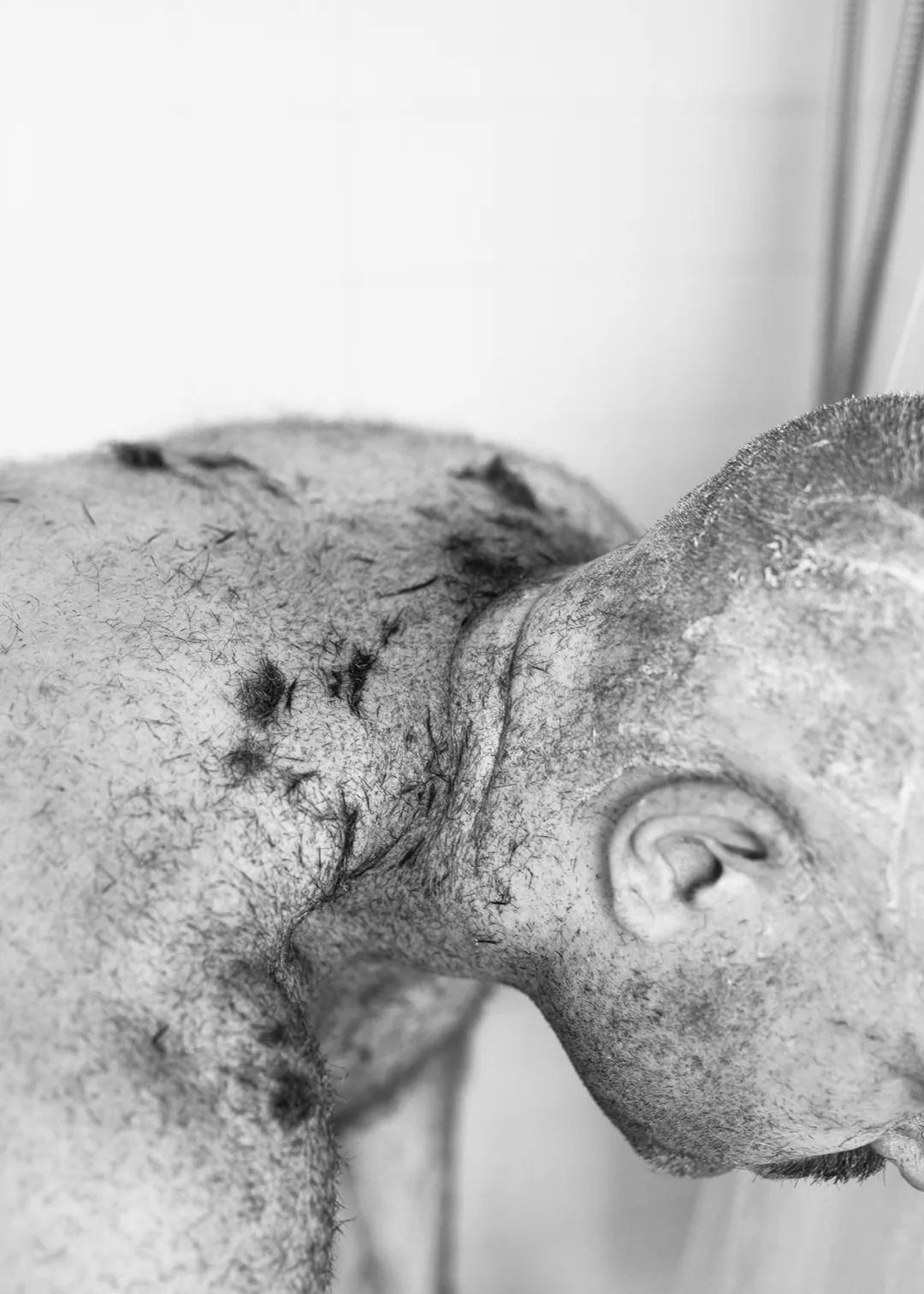
Ryan_Quarantive Cut (Brooklyn), 2020
cusp. :
What cultural/factors have influenced your creation? (e.g. literature, movies, music, games, architecture, etc.)
可以告诉大家你创作受到哪些文化和因素的影响吗?
Bryson Rand:
I find influence all around me, but as I said earlier, the photographs of artists like Peter Hujar, Nan Goldin, Alvin Baltrop, and David Wojnarowicz have provided me with an understanding of a generation and culture that was radically altered due to the AIDS crisis. Their approaches to art making and the spoken/written records they left behind have given me a foundation for my own artistic practice. I believe that, as David Wojnarowicz wrote, ‘...if I make something and leave it in public for any period of time, I can create an environment where that object or writing acts as a magnet and draws others with a similar frame of reference out of silence or invisibility’.
I draw inspiration from my friends and peers, and am grateful for the ways they challenge me to continue growing as an artist, their participation in my work, and for the powerful artwork they create.
我发现影响围绕着我,但正如我之前所说的,像Peter Hujar, Nan Goldin, Alvin Baltrop 和David Wojnarowicz 这样的艺术家的照片让我了解到由于艾滋病危机而被彻底改变的一代人和文化。他们的艺术创作方法和他们留下的口头/书面记录为我自己的艺术实践打下了基础。我相信,正如David Wojnarowicz所写的,
"......如果我做了一些东西,并把它留在公共场所的任何一段时间,我可以创造一个环境,让这个物体或文字作为一块磁铁,吸引具有类似参照系的其他人走出沉默或隐身。 ”
我从我的朋友和同行那里获得灵感,并感谢他们激励我让我继续成长为一个艺术家,感谢他们对我工作的参与,以及他们创造的有力量的作品。

Know Your Power (Riis Beach), 2021
cusp. : Can you introduce one or two of your own works/projects in detail?
能否详细介绍自己的 1、2 件作品/项目?
Bryson Rand:
Right now I am making new pictures and working on editing the work I have made over the past few years. There have been many shifts in the access I have to photograph with other people and in public/semi-public places. During all the transitions I continued making photographs and adapting to the circumstances. Some of my favorite photos I’ve made recently were in my apartment during lockdown. Despite the sense of claustrophobia that exists in the images, there is immense care and gratitude expressed in them. I am curious to see how all the work over these different periods come together and inform how I move forward.
现在,我正在制作新的照片,并努力编辑我在过去几年中的作品。在我与其他人以及在公共/半公共场所进行拍摄的机会方面,已经发生了许多变化。在所有的转变中,我继续拍摄照片并适应环境。最近我最喜欢的一些照片是在我的公寓里拍摄的,当时正处于封锁状态。尽管图像中存在着幽闭感,但其中表达了巨大的关怀和感激之情。我很好奇,在这些不同时期的所有实践是如何汇集在一起,并告知我如何前进的。
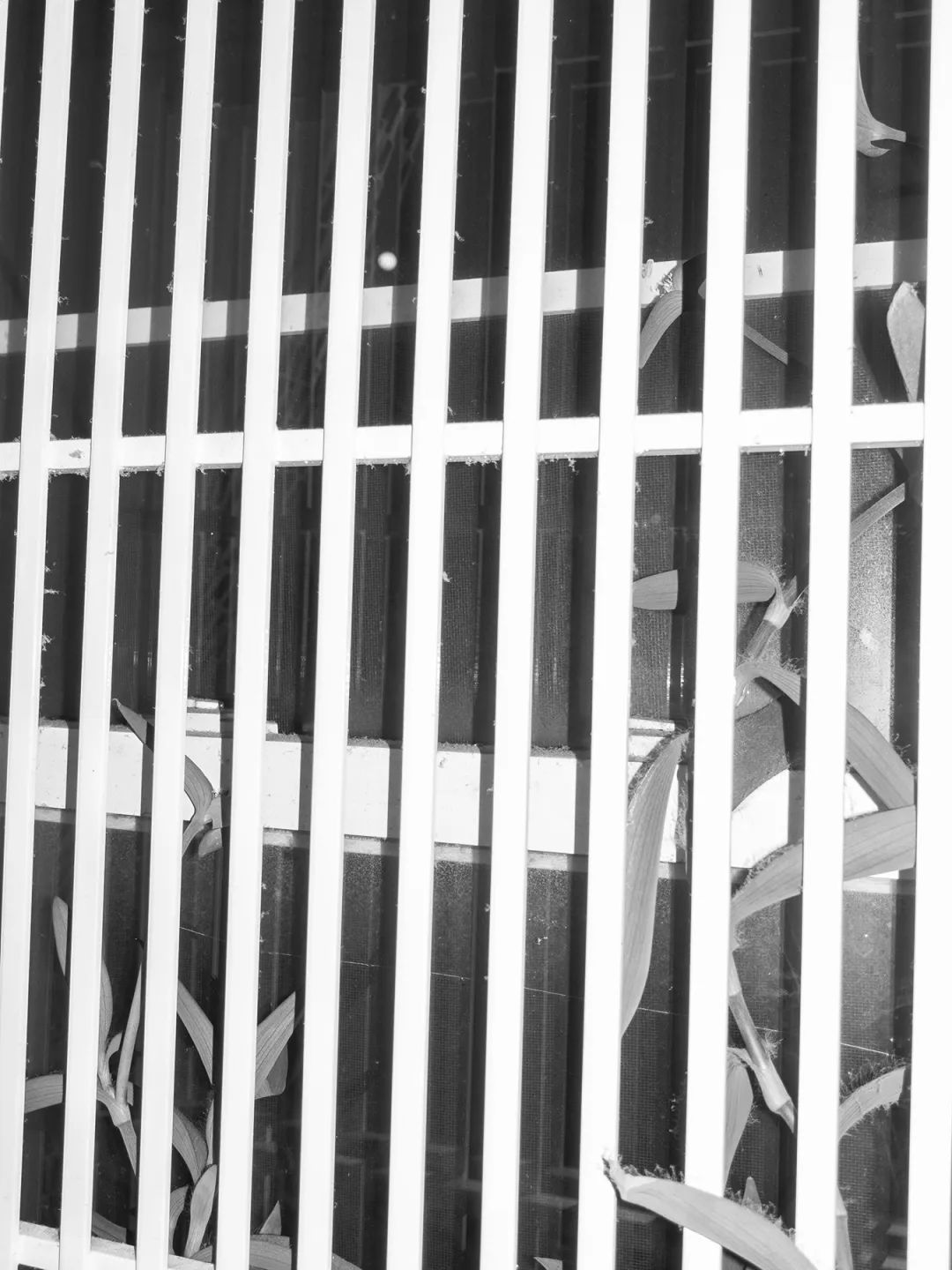
Quarantine Full Moon (Brooklyn), 2020
cusp. :
Can you introduce your life and creative state? What are your special work habits? (It can include inspiration collection, daily work habits, the process from inspiration to realization, etc.)
可以讲述一下你的生活和创作状态?
Bryson Rand:
I have always felt it was important to be adaptable as an artist. Throughout my life I have found ways to make photographs wherever I find myself, reflecting my experience in the landscape as well as private and public spaces. For many years I primarily made photographs of people in their living spaces or invited them to my home to create photos. Over the past few years I have had on and off access to studio spaces which has allowed my practice to shift and grow in surprising ways. Whatever situation I find myself in, I attempt to make photographs that transform the space, revealing energies and forces that are unseeable without the intervention of the camera. When I begin making photographs I start with a mood, gesture, or interaction in mind, rather than a specific image I want to create. This allows me to remain open to interactions between myself and the people and/or environment I am making photographs with and respond accordingly.
我一直觉得作为一个艺术家,适应性是很重要的。在我的一生中,我找到了在任何地方拍摄照片的方法,反映了我在风景以及私人和公共空间的经验。许多年来,我主要是在人们的生活空间里拍摄照片,或者邀请他们到我家里来创作照片。在过去的几年里,我时常接触到工作室的空间,这让我的实践以惊人的方式转变和成长。无论我发现自己在什么情况下,我都试图拍出能改变空间的照片,揭示出没有相机的介入就无法看到的能量和力量。当我开始制作照片时,我开始考虑一种情绪、姿态或互动,而不是我想创造的特定图像。这使我能够对我自己和我正在拍摄的人和/或环境之间的互动保持开放,并作出相应的反应。

Matthew in the Studio (Brooklyn), 2022
cusp. :
What are your daily hobbies?
你每天的习惯是什么?
Bryson Rand:
I am always reading at least one book. Books are a way for me to learn about the world, escape into other realms, and find inspiration. I have been reading a lot of sci-fi and fantasy novels and my favorite book that I have read recently is Lillith’s Brood by Octavia Butler.
我总是在阅读至少一本书。书籍是我了解世界的一种方式,逃避到其他领域,并寻找灵感。我一直在阅读大量的科幻和幻想小说,我最近最喜欢的书是 Octavia Butler 写的 Lillith’s Brood。
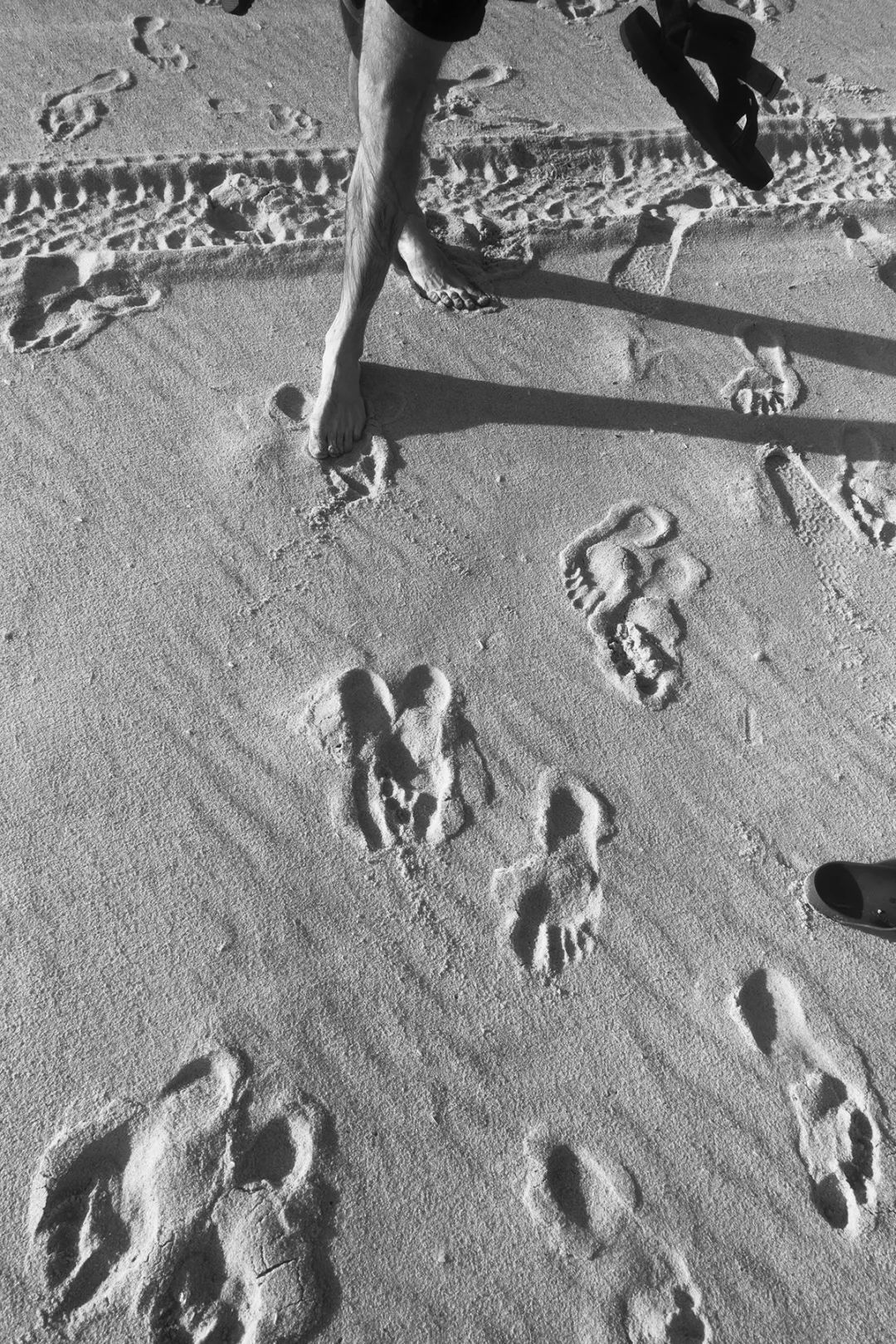
Patrick's Feet_Footprints (Fire Island), 2021
cusp. :
What is the current concern and thinking?
最近每天思考和关心的问题是什么?
Bryson Rand:
Over the last few years I have had to find new ways to continue making work during periods of isolation and anxiety about being around other people. Through this process I discovered new ways to make photos and opened up the scope of my work. I found myself photographing things that I would not have allowed myself to prior to the pandemic (i.e. objects cluttering my desk, portraits of my dog, the play of light and shadows in my apartment). This led me to reconsider how I organize my work and I have been experimenting with bringing together work that was made in different time periods and locations, therefore bringing a new fluidity to my photographs and how I bring them together in sequences and groupings. Changing my old habits around how I organize my work has allowed me to see new possibilities as I continue making photographs.
在过去的几年里,我不得不找到新的方法,在与世隔绝和对与他人相处感到焦虑的时期继续制作作品。通过这个过程,我发现了制作照片的新方法,并打开了我的实践范围。我发现自己在拍摄大流行之前不会允许自己拍摄的东西(例如,我桌子上的杂物,我的狗的肖像,我公寓里的光影游戏)。这导致我重新考虑如何组织我的工作,我一直在尝试将不同时期和地点的作品放在一起,因此给我的照片带来了新的流动性,以及我如何将它们按顺序和分组放在一起。改变我的旧习惯,围绕我如何组织我的作品,使我在继续制作照片时看到新的可能性。

Ryan_Beam, (Brooklyn), 2020
cusp. :Can you talk about favorite artists and favorite books?
可以讲讲你喜欢的艺术家和喜欢的读物吗?
Bryson Rand:
I have so many! But if I had to choose one artist and book that has had the greatest impact on my way of working and thinking about art it would be David Wojnarowicz and his book Close to the Knives. I first read this book when I was in grad school at a time when I was unsure about the focus of my work and why being an artist was important. His fearlessness in expressing a broad range of emotions while taking a social stance through his visual art and writing acted as a guide for me to do the same. I turn to his work and specifically Close to the Knives when I am feeling lost or confused about the direction of my own work. I am eternally grateful for the generosity of his creative output and wish I could thank him in person. I also recently watched a documentary about Sinead O’Connor that made me fired up. I am in awe of her talent and her determination to do what she believes is just.
我有很多~但如果我不得不选择一位艺术家和一本书,对我的工作方式和对艺术的思考产生了最大的影响,那就是David Wojnarowicz和他的 Close to the Knives。我第一次读这本书是在我读研究生的时候,当时我不确定我工作的重点,以及为什么作为一个艺术家是重要的。他无所畏惧地表达了广泛的情感,同时通过他的视觉艺术和写作采取了社会立场,这对我来说是一个指导,让我也这样做。当我对自己的工作方向感到迷茫或困惑时,我就会求助于他的作品,特别是 Close to the Knives。我永远感谢他慷慨的创作成果,并希望能当面感谢他。我最近还看了一部关于 Sinead O’Connor 辛妮-奥康纳的纪录片,让我热血沸腾。我对她的才华和她做她认为公正的事情的决心感到敬畏。
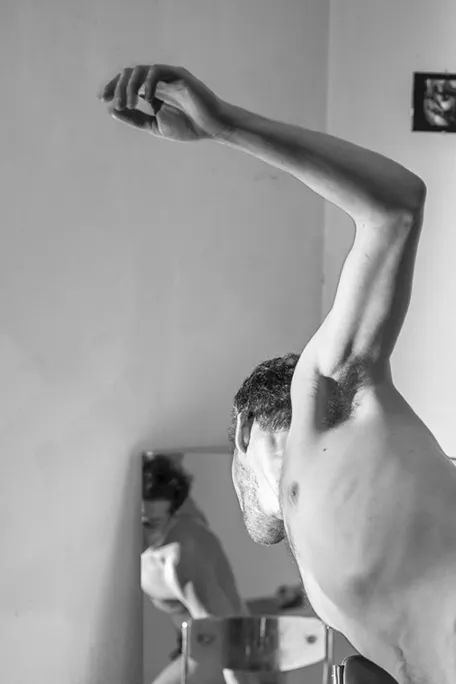
Details of Jimmy Running in the Studio_Patrick's Photos, 2020
cusp. :
What do you think is the happiest thing you have ever encountered?
觉得遇到过最开心的事情?
Bryson Rand:
Being a dog owner has brought immense joy into my life. I don’t know how I would have gotten through the past few years without my pups.
作为一名狗主人,给我的生活带来了巨大的快乐。我不知道如果没有我的小狗们,我将如何度过过去几年的时光。
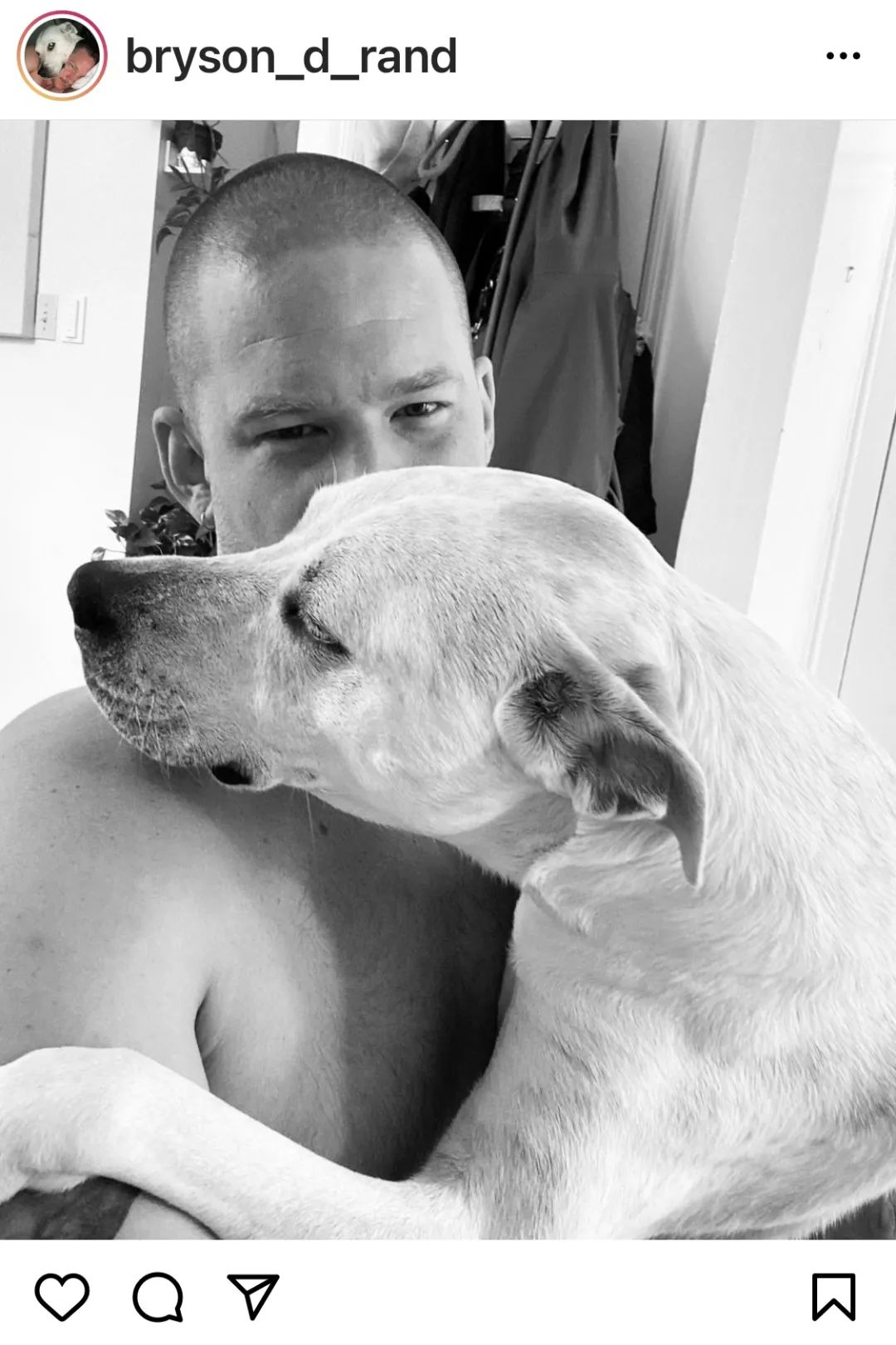
From Instagram Bryson & his dog
cusp. :
Talk about future plans?
你未来的规划是什么?
Bryson Rand:
I just had a small two-person show in NYC with my close friend and collaborator, Patrick McNabb, that was curated by Peter Clough. I have such admiration for them both and hope to collaborate with them on something more extensive in the future. I have been working on creating an edit for a book that brings together photographs from the past decade and would love to find a publisher to work with on that.
我刚刚与我的亲密朋友和合作者Patrick McNabb在纽约市举办了一个小型的双人展,由Peter Clough策划。我非常钦佩他们,希望将来能与他们合作,做一些更广泛的事情。我一直在为一本汇集了过去十年摄影作品的书进行编辑,并希望能找到一个出版商来合作。
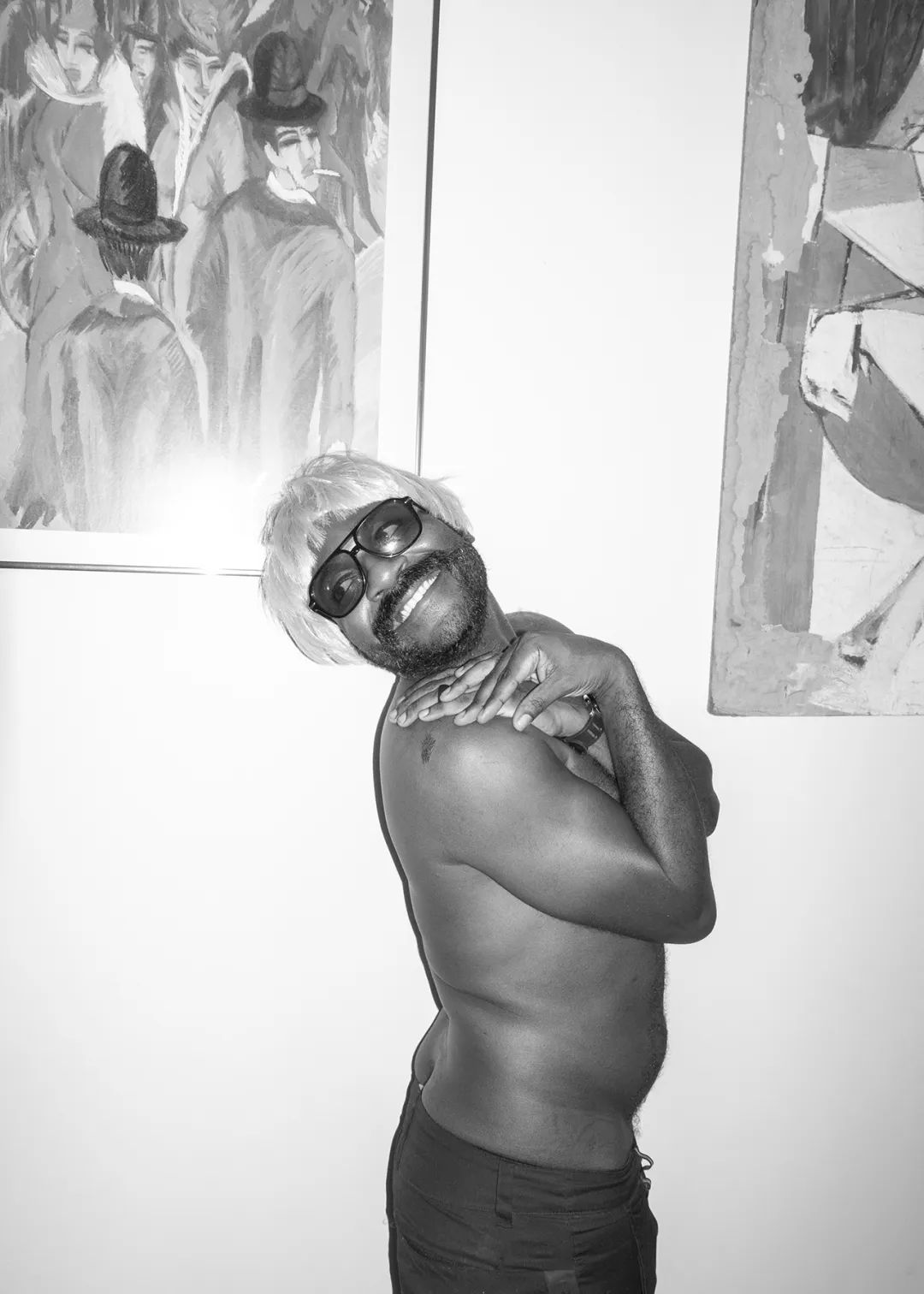
Eddie_Blonde Wig (Queens), 2020
cusp. :
What do you think about the theme of this exhibition?
这次展览主题的看法?
Bryson Rand:
I am excited to be included in a show that brings together a diverse range of visual approaches and expressions of queerness. A central part of being queer is embracing possibilty and finding ways to exist that are not dictated by societal norms. The work that was brought together for this exhibition is a visual embodiment of the possibility, generosity, and beauty that queer people foster. I strive to create work that harnesses those ideas and allows viewers to recognize their
我很高兴能被纳入一个汇集了各种视觉方法和各种不同queer表达方式的展览中。作为queer的一个核心部分是拥抱可能性,找到不受社会规范支配的存在方式。为这次展览汇集的作品在视觉上体现了queer存在的可能性、慷慨和美丽。我努力创造利用这些想法的作品,让观众在照片中认识到自己的经历。